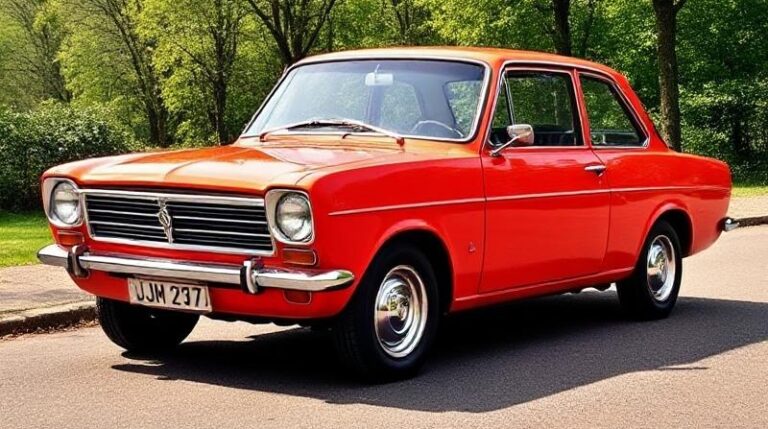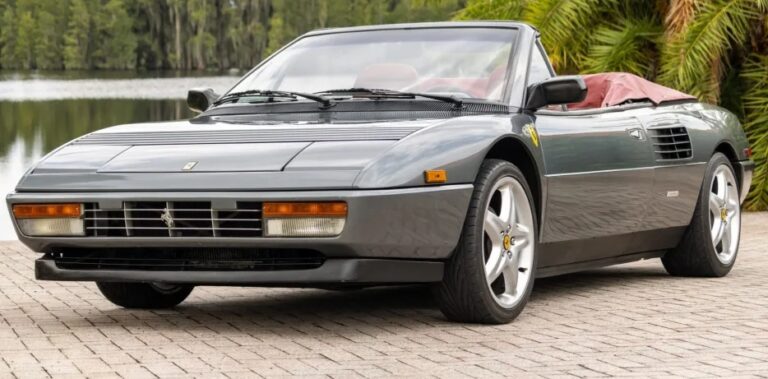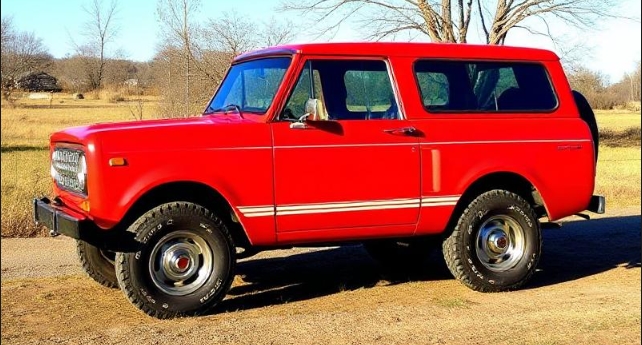The Volkswagen T-Roc Story: Charting the Evolution of VW’s Compact Crossover Chameleon
In the mid-2010s, the automotive world was in the throes of an SUV revolution. Buyers were flocking from traditional hatchbacks and saloons to higher-riding, more practical crossover vehicles. Volkswagen, a master of the hatchback with its iconic Golf, was well-established in the larger SUV segment with the Touareg and the increasingly popular Tiguan. However, it was noticeably late to the booming compact crossover party, a segment dominated by pioneers like the Nissan Juke and Renault Captur. To succeed, Volkswagen needed more than just a smaller Tiguan; it needed a vehicle with personality, style, and a youthful appeal that could capture the hearts of hatchback loyalists while offering the coveted SUV stance.
The answer arrived in the form of the T-Roc, a vehicle that has since become a cornerstone of the brand’s global strategy. From its bold concept to its diverse production models—including high-performance and convertible variants—the T-Roc’s evolution is a story of a brand adapting to market demands while injecting a much-needed dose of design flair into its famously pragmatic lineup.
The Genesis: From 2014 Concept to 2017 Production Reality
The T-Roc’s journey began not on the production line, but under the spotlights of the 2014 Geneva Motor Show. Volkswagen unveiled the T-Roc concept, a striking two-door crossover with a targa-style removable roof, rugged body cladding, and a muscular, wide-shouldered stance. It was a clear statement of intent. Built on the versatile Modular Transversal Matrix (MQB) platform—the same architecture underpinning the Golf Mk7—the concept promised the solid driving dynamics of a hatchback fused with bold, expressive SUV design.
While the targa roof was ultimately reserved for a later, more niche model, the core design DNA of the concept—the wide grille seamlessly integrating with the headlights, the distinctive circular LED daytime running lights, and the powerful wheel arches—was carried over almost wholesale to the production version. After three years of development and refinement, the production-ready Volkswagen T-Roc was officially revealed in August 2017, with sales beginning late that year as a 2018 model.
.
THIS could come in handy for your auto garage (and everywhere else!):

.
The First Generation Arrives (2017-2021): A Statement in Style
The production T-Roc immediately stood out from Volkswagen’s typically conservative portfolio. Its design was confident and customizable. The most notable feature was the optional two-tone paint scheme, allowing customers to specify a contrasting roof color (in black, white, or red), which visually lowered the car’s profile and added a significant degree of personalization. This, combined with a sharp, coupe-like C-pillar and a palette of vibrant body colors, made the T-Roc a far more expressive vehicle than its stablemates.
Inside, the T-Roc continued the theme of personalisation with coloured dashboard and door trim panels that could match the exterior paint. While praised for its ergonomic layout, excellent infotainment systems, and the availability of the brand’s acclaimed Active Info Display (digital cockpit), the initial interior drew criticism for its extensive use of hard, scratchy plastics—a surprising departure from the premium, soft-touch materials found in its sibling, the Golf. Despite this, its practicality remained a strong suit, offering a generous 445-litre boot, significantly more than the Golf.
Trim Levels (UK/European Market, 2017-2021):
The launch model was offered in a clear and comprehensive trim structure, catering to a wide range of buyers.
- S: The entry-level model provided the essentials. It typically came with a Composition Media infotainment system with an 8-inch touchscreen, air conditioning, lane-keeping assist, and automatic emergency braking (Front Assist). It was primarily offered with the entry-level 1.0-litre TSI petrol engine.
- SE: Representing the sweet spot in the range, the SE added crucial features like 17-inch alloy wheels, adaptive cruise control, front and rear parking sensors, and smartphone integration via Apple CarPlay and Android Auto.
- Design: This trim focused squarely on style and personalisation. It made the contrasting roof and door mirrors a standard feature and included customisable interior dash pad colours. It also featured ambient interior lighting and unique alloy wheel designs.
- SEL: Sitting near the top of the range, the SEL was the technology-focused model. It came standard with satellite navigation, the 10.25-inch Active Info Display, LED headlights, sport seats, and larger 18-inch alloy wheels.
- R-Line: For those wanting a sportier look, the R-Line trim added an aggressive exterior body kit with unique bumpers, R-Line badging, 19-inch alloy wheels, sports suspension, and an interior decked out with an R-Line steering wheel and sport seats.
Powertrains: The T-Roc launched with a familiar and efficient range of TSI petrol and TDI diesel engines. This included the 1.0 TSI (115 PS), the 1.5 TSI Evo with cylinder deactivation (150 PS), and the 2.0 TSI (190 PS). On the diesel front, a 1.6 TDI (115 PS) and a 2.0 TDI (150 PS or 190 PS) were available. Volkswagen’s 4MOTION all-wheel-drive system and 7-speed DSG automatic gearbox were offered on the more powerful engines.
Expanding the Family (2019): The R and the Cabriolet
By 2019, the T-Roc had established itself as a sales success. Volkswagen, feeling confident, decided to push the platform’s versatility to its limits by introducing two highly specialised variants that solidified the T-Roc’s identity as the brand’s most adventurous model.
- Volkswagen T-Roc R (2019-Present): Unveiled at the 2019 Geneva Motor Show, the T-Roc R was a genuine performance SUV, borrowing its heart from the legendary Golf R. It was equipped with a 2.0-litre turbocharged four-cylinder engine producing 300 PS and 400 Nm of torque. Paired exclusively with a 7-speed DSG and 4MOTION all-wheel drive, it could sprint from 0-62 mph in just 4.8 seconds. More than just a powerful engine, the T-Roc R received a full performance makeover, including lowered suspension, progressive steering, larger brakes, a launch control function, and a distinctive quad-exit exhaust system. Visually, it was set apart by aggressive bumpers, 18-inch ‘Spielberg’ alloy wheels, and signature R details like matte chrome mirror caps. It was the “hot hatch on stilts” that nobody knew they needed.
- Volkswagen T-Roc Cabriolet (2020-Present): Even more audacious was the T-Roc Cabriolet, which went on sale in 2020. This model filled a tiny, almost non-existent niche for mainstream convertible SUVs, previously occupied only by the short-lived Range Rover Evoque Convertible. To create it, Volkswagen extensively re-engineered the T-Roc’s body, removing the rear doors, shortening the wheelbase slightly, and heavily reinforcing the chassis to compensate for the loss of a fixed roof. It featured a classic fabric soft-top that could be operated electrically at speeds up to 19 mph. Inevitably, practicality was compromised—the boot shrank to 284 litres and the rear seats became tighter—but its appeal was based purely on style and open-air freedom. It was offered in a simplified trim structure, typically ‘Style’ and ‘R-Line’, and with a limited engine choice, usually the 1.0 TSI and 1.5 TSI petrol engines.
The Mid-Life Refresh (2022-Present): A Polish of Quality
After four successful years, Volkswagen announced a comprehensive facelift for the T-Roc in late 2021 for the 2022 model year. This update was designed to address the main criticisms of the original model while modernising its technology and styling.
The most significant change was inside the cabin. The widely criticised hard-touch dashboard was replaced with a premium, soft-touch, stitched material, immediately lifting the perceived quality. The infotainment screen was moved from its integrated position to a more modern, tablet-style placement atop the dashboard. A digital instrument cluster became standard across the entire range, and the climate controls were updated to a sleek, but sometimes fiddly, touch-sensitive panel.
Externally, the changes were subtle but effective. The front bumper was redesigned for a more assertive look, and the headlights were updated, now with the option of Volkswagen’s advanced IQ.LIGHT matrix LED technology. A new signature light bar spanning the grille on higher trims brought the T-Roc in line with other modern VWs like the Golf Mk8 and ID family. At the rear, the tail lights received new LED graphics and a smoked finish.
Revised Trim Structure (2022-Present):
The facelift also brought a simplified and renamed trim hierarchy (in the UK market).
- Life: The new entry point replaced the ‘S’ and ‘SE’, offering a generous standard specification including LED headlights, an 8-inch digital cockpit, adaptive cruise control, and parking sensors.
- Style: This trim essentially merged the old ‘Design’ and ‘SEL’ trims, focusing on comfort and technology. It added a larger 10.25-inch Digital Cockpit Pro, built-in navigation, 17-inch alloy wheels, and sportier comfort seats.
- R-Line: The R-Line maintained its position as the sporty flagship of the core range, receiving the same interior and exterior updates while retaining its unique body kit, 18-inch wheels, sports suspension, and driving profile selection.
The T-Roc R and T-Roc Cabriolet also received the same interior and exterior enhancements, ensuring the entire family felt fresh and cohesive. The engine lineup remained largely the same, focusing on the proven TSI and TDI units, though without any move towards hybrid or electric powertrains.
Conclusion: A Compact Success Story
The Volkswagen T-Roc evolved from a daring concept into a mature, multi-faceted, and enormously successful product. It successfully bridged the gap between the practicality of the Golf and the desirability of an SUV, proving that Volkswagen could produce a vehicle that was not only engineered with precision but also designed with passion. Its journey has been defined by its willingness to be different: the bold colours, the class-leading practicality, and the audacious decision to create high-performance ‘R’ and open-top Cabriolet versions. The 2022 facelift addressed its primary weakness—interior material quality—and cemented its position as a class leader. In a crowded market, the T-Roc has carved out a unique identity as Volkswagen’s versatile and stylish compact chameleon, a car for every taste and a testament to the brand’s ability to evolve and capture the spirit of the times.







